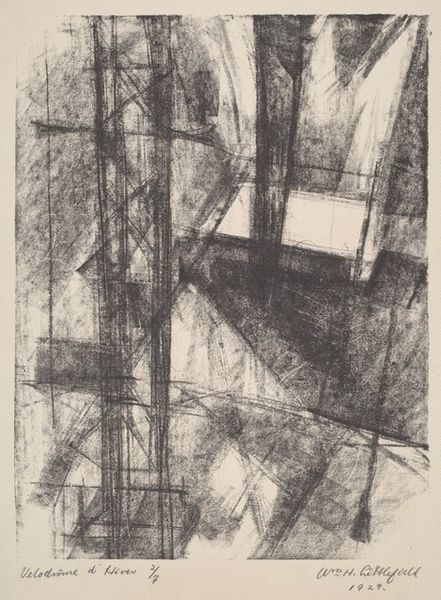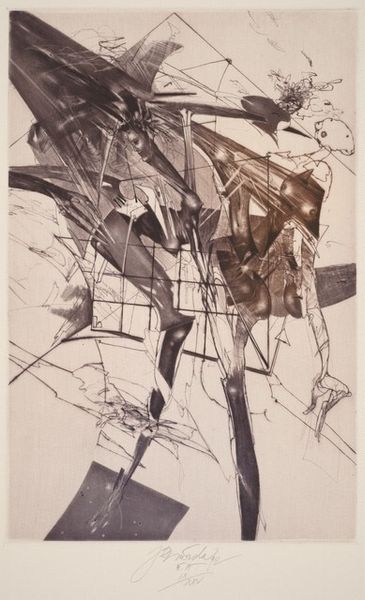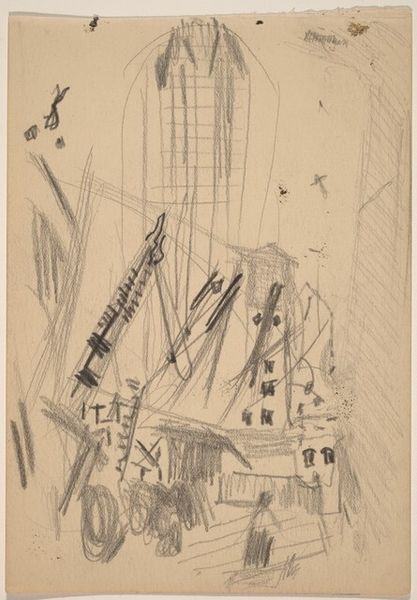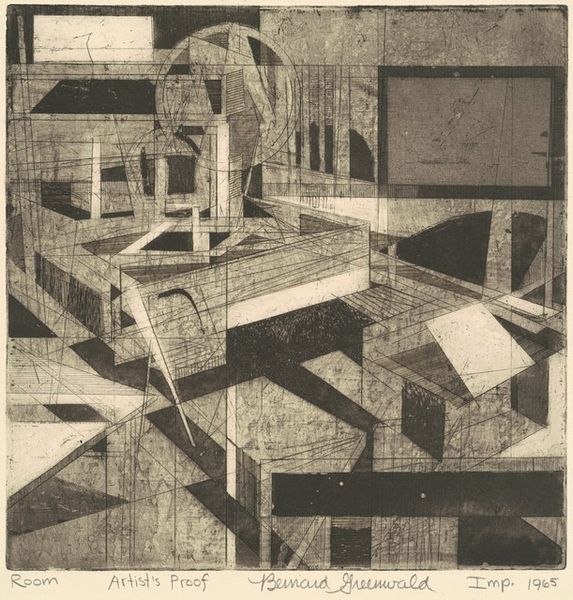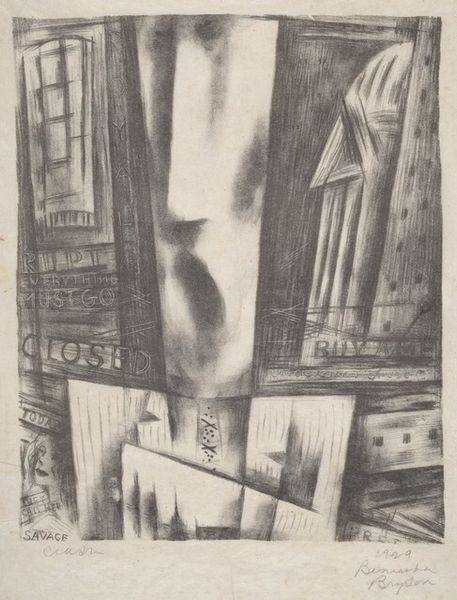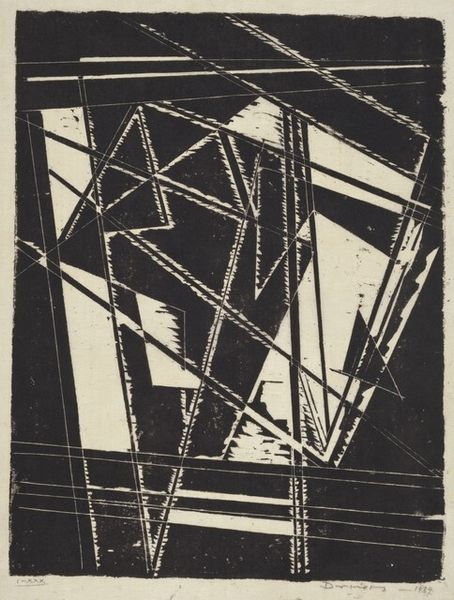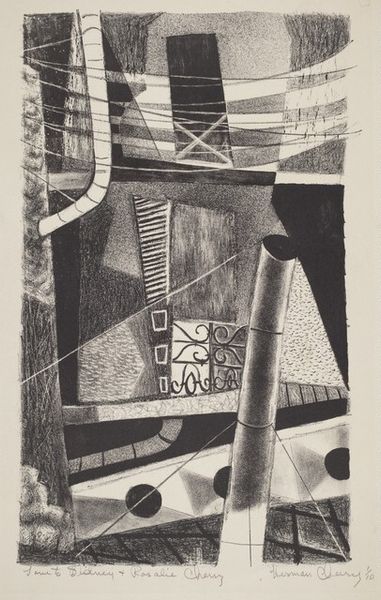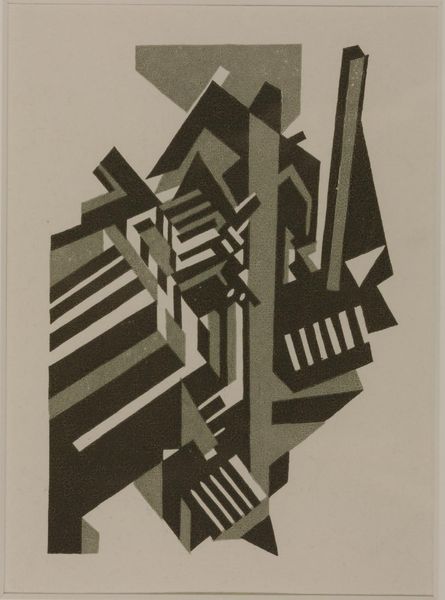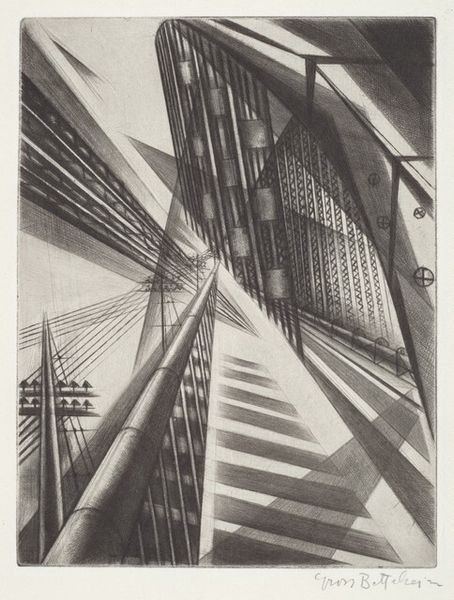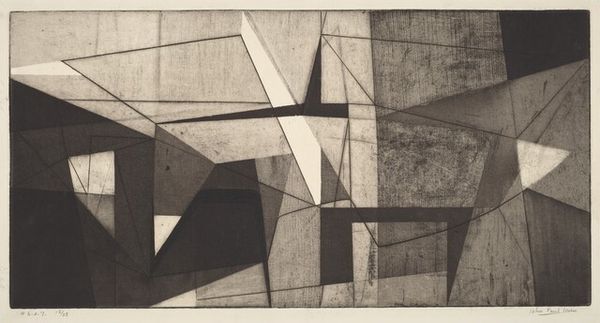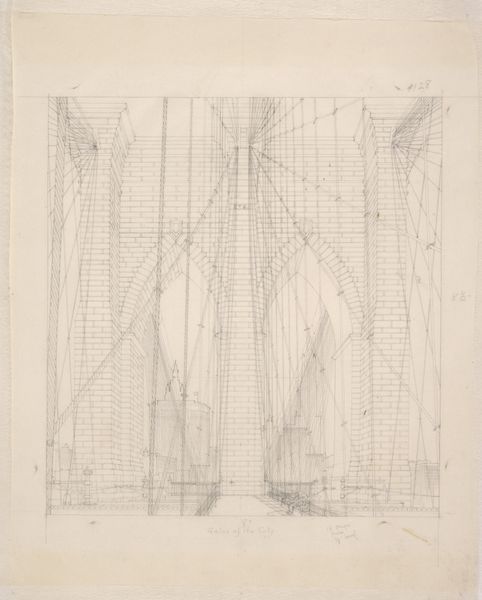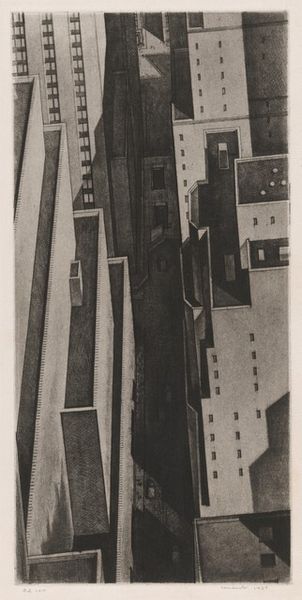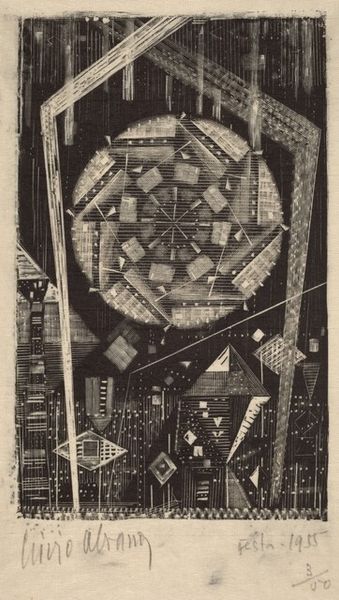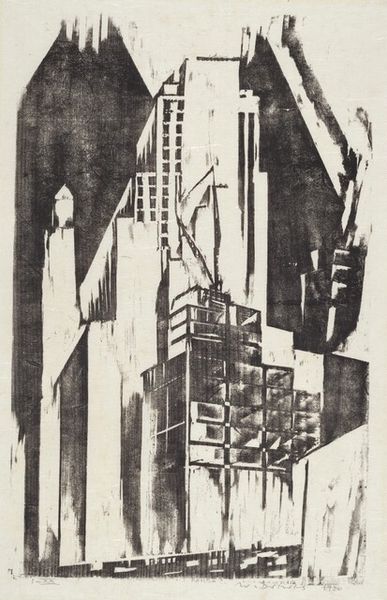
print, etching
# print
#
etching
#
constructivism
#
geometric
#
abstraction
#
line
Copyright: František Hudeček,Fair Use
Curator: Standing before us is František Hudeček’s etching from 1944, titled "Night Walker". Editor: My first impression is a feeling of unease and disorientation. The severe angles and the high contrast give it an almost architectural rigidity, yet something about its skewed perspective deeply unsettles me. Curator: That tension you identify speaks volumes about the socio-political landscape in which it was created. Remember, this work emerged during the height of World War II. We can see constructivist lines clashing, perhaps embodying the conflicting ideologies and forced geometries imposed on daily life under occupation. How does it make you reflect on control and containment? Editor: It's true, the etching process itself—the pressure, the controlled lines—is an act of imposed structure. There is a repetitive line work too, which gives an oppressive character; how could the material of etched lines and their execution reflect larger social impositions or resistance? Curator: Precisely! Furthermore, note how geometric abstraction, in its departure from figurative representation, allowed Hudeček to circumvent direct censorship while still subtly expressing the fractured and oppressive reality. Can art made out of imposed parameters liberate thought through its forms? Editor: Looking at the lines, and thinking about liberation, it feels less like resistance and more like fragmented reflections of an urban plan; how labor is structured, space is controlled, the kind of dystopian design that becomes material evidence of broken promise. Curator: That reading brings out its pessimism; in any case, by situating this work within its specific historical moment, we reveal it as far more than a simple abstraction. It speaks to the enduring power of art to both reflect and critique oppressive forces, providing a visual testimony to a tumultuous era. Editor: I am now struck that even an abstract print can function as a kind of forensic record; not only what it depicts but how it was produced speaks to an anxious reality. Thank you!
Comments
No comments
Be the first to comment and join the conversation on the ultimate creative platform.
